
Content sponsored by:
Priya Chemicals
Trace minerals are vital for cattle performance
Published: February 27, 2021
By: Dr. R.Y. Angle, Priya Chemicals
Trace elements are required for numerous metabolic functions in livestock. Optimal production and performance require adequate intake of balanced trace minerals. As trace mineral status of the animal declines from adequate to marginal, immunity and enzyme functions are compromised followed by the loss of performance and reproduction.

Copper
Copper deficiency is a serious problem for dairy cattle. Copper is essential for enzyme funcuo immunity, connective tissue metabolism and iron metabolism among other functions.
Copper deficiency can result in delayed estrus, reduced libido, decreased conception rates, inferuy early embryonic death, necrosis of the placenta and central nervous system abnormalities in offspring.
Newborns are very dependent on copper acquired during the prenatal period. Since copper leveis milk are poor, therefore, proper copper nutrition in gestating females is critical to body stores in newoo Maternal copper deficiency has been linked to increased mortality and morbidity in lambs and calves.
Zinc
Zinc is essential for sexual maturity and onset of estrus. Zinc plays a role in epithelial integrity, meaning that zinc is ossontial for maintaining the lining of the reproductive organs. Adequate zinc levels are vital for ropair of the uterine lining following calving, return to normal estrus cycles and maintenance of the uterine lining necessary for implantation of embryos.
Inadequate zinc levels in cattle have been associated with abortion, fetal mummification, lower birth weights and prolonged labor. Zinc is also vital to sperm quality in males. Zinc also affects hoof and joint health.

Cobalt
Cobalt's primary role in ruminants is a building block for vitamin B12. This essential vitamin can be manufactured in the rumen by the microorganisms when cobalt and other precursors are available. Very little cobalt is stored in body tissues.
Signs of cobalt deficiency include: Reduced appetite, reduced growth rate, pale skin and mucous membranes, reduced disease resistance. Young rapidly growing cattle seem more susceptible to cobalt deficiency than mature cattle.
Manganese:
Manganese is essential in bone growth and formation in young animals and in maintaining optimum fertility in female cattle.
Signs of manganese deficiency include: Skeletal abnormalities in young cattle resulting in stifness, twisted legs. enlarged joints, and reduced bone strength, low reproductive performance in mature cattle, abortions, stillbirths, low birth weights
Research suggests that the availability of forage manganese is quite low (less than 20%).
Process of mineral absorption
Different classes of minerals have different levels of bioavailability. Before a trace mineral can be e absorbed, it must first become attached to an organic molecule or "ligand". This process allows it to pass through the intestine, into the bloodstream and on to tissues and organs for utilization.
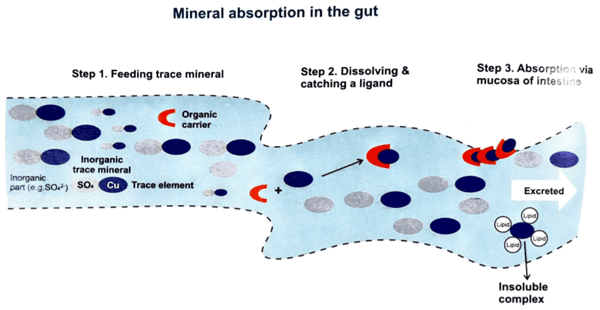
If a trace mineral does not attach to a legand, it simply won't be absorbed, which is often the case with inorganic trace mineral supplementation.
Extent of inorganic copper absorption in ruminants is 1-3% and manganese is 3-4% only.
Reason for poor bioavailability of minerals
1. Mineral interaction:The nogative interaction of mineral ions is one of the major factors that causes ow bunavailability of these minerals
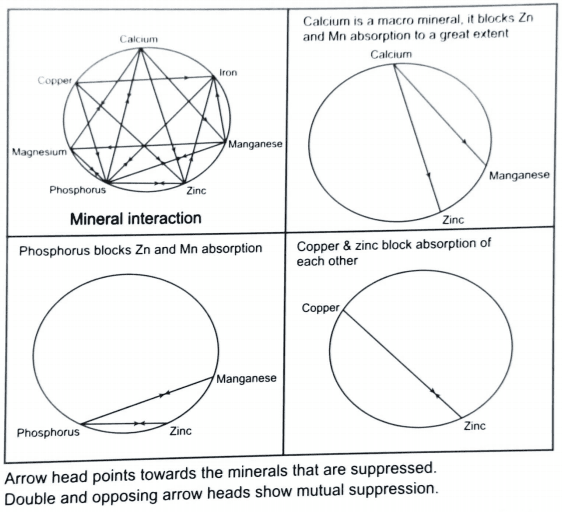
2. Anti-nutritional factors:Inorganic ionized mineral forms can bind with un-absorbable compounds like oxalates (abundant in leafy greens) and phytates (abundant in nuts, seeds, legumes and whole grains) reducing absorption of these minerals.

3. Interaction with intestinal contents: Inorganic ionized mineral forms attract fats, fibers and other organic matter present in the intestine forming large complexes which are not absorbed in the intestine.
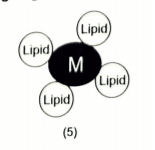
Amino Acid Chelated (AAC) Minerals: An ideal solution
These minerals are formed from reaction of a mineral ion With amino acids having a mole ratio of one mole of metal to one, two or three (preferably two) moles of amino acids. it prevents mineral interaction and protects minerals from reacting with intestinal anti-nutritional factors.

Performance of Amino Acid Chelates (AAC) depends upon:
Molecular size : AAC with smaller molecular size are more bioavailable than AAC with larger molecuiar size.
Stability in rumen: The role of AAC is to protect the mineral from antagonists present in the rumen and from changes in the pH as it moves through the digestive tract. The ligand in the AAC should resist degradation by digestive enzymes and gut microfilora.
Solubility : High solubility enables the product to be homogeneously distributed in intestinal contenis and to be able to reach the surface of the intestinal tract for absorption. Molecular size significantly areuis solubility ofAAC.
LOwest molecular size : GCM have the lowest molecular size so these easily pass through the ntestinal wall and transported right in to the cell itself
Stable chelate: Glycine makes a stable chelate by binding with mineral at two places, GCM does not get degraded in rumen.
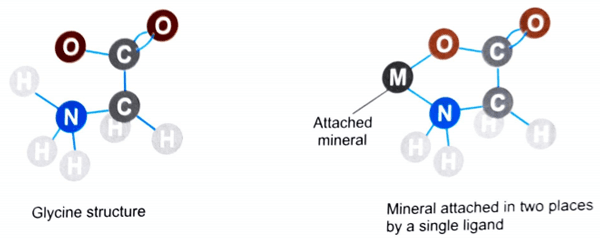
gh solubility : Glycine chelated minerals are highly soluble in water. GCM of single amino acid, dipeptides & tripeptides are soluble in water.
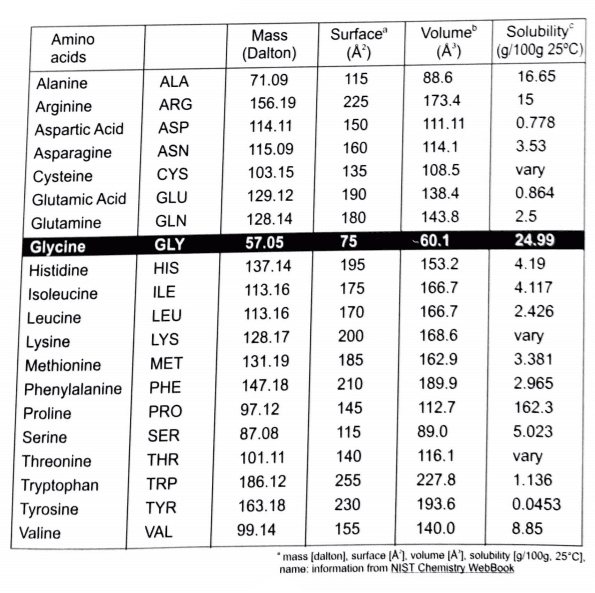
High bioavailability: 1. Absorption 2. Tissue penetration 3. Tissue retention
1. High absorption:
(a) Copper glycinate vs inorganic copper: In an in vitro study the absorption of copper contained in inonganic compounds was compared with glycinate chelates by supplementing equal amounts of inorganic and gyeine chelated minerals.
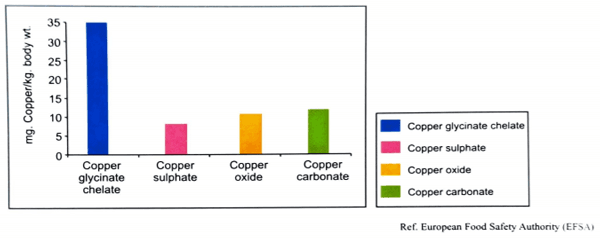
(b) Zinc glycinate vs inorganic zinc : Glycine chelated zinc and inorganic zinc containing an eguivalent mineral concentration were given in an in vitro trial.
The results showed that the intestinal uptake of zinc was considerably greater for the zinc glycinate tate solution compared to uptake from inorganic zinc.
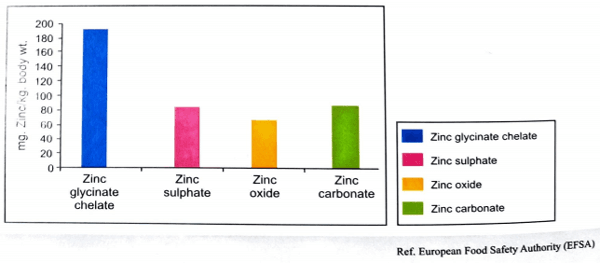
(c) Efect of calcium antagonism: Glycine chelated vs inorganic: In a study. the animals were aien a det supplemented with 50 mg/kg bw of Zn as oxide or glycinate chelate in the presence of 20 g/kg bw alcum Zinc ghvcinate chelate treatment resulted in more hair growth and higher zinc content of the hair, SDeshing higher bioavailability of zinc glycinate in the face of dielary antagonisms
Ref European Food Safety Authority (EFSA)
2. High tissue penetration: Glycine chelated vs inorganic : In an in vivo study whereby two groups of rats each received an intra pertoneal dose of 5 0 ug of Zn as either Zn glycinate or as Zn chloride following a 24-hour fast. Four hours post dosing. each animal was sacrificed deposition of Zn from Zn glycinate was greater in muscle, kidney and brain.
(Peck and Graf, 1973). Ref. European Food Safety Authority (EFSA)
3. High tissue retention In an in vivo study animals received the same amount of zinc, either as zinc chloride or as zinc glycinate chelate. the animals were observed for 7 days faeces were collected& zinc contents were measured in the faeces
More than 50% of zinc chloride was excreted in comparison only 12% zinc glycinate was excreted the same period.
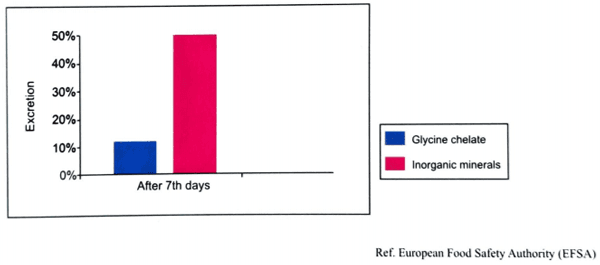
Studies have shown that glycine chelated minerals of single amino acid, dipeptides & tripeptides are absorbed intact and can be found in the portal blood of animals (Koeln and Webb, 1982). The size of a high proportion of these chelates were estimated to be less than 300 daltons (Schlaghek and Webb, 1984)
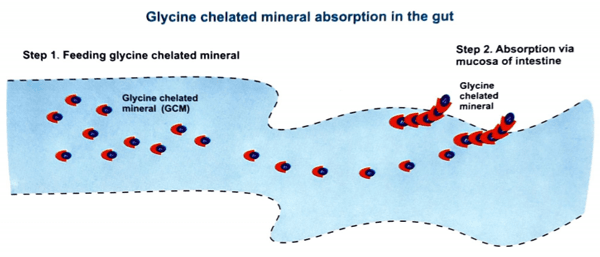
Larger molecules of AAC are 1" broken down in digestive process and body has to re-chelate these minerals for absorption. These minerals are exposed to anti-nutritional factors & antagonism.
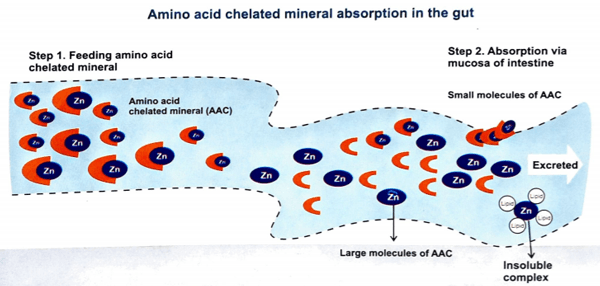
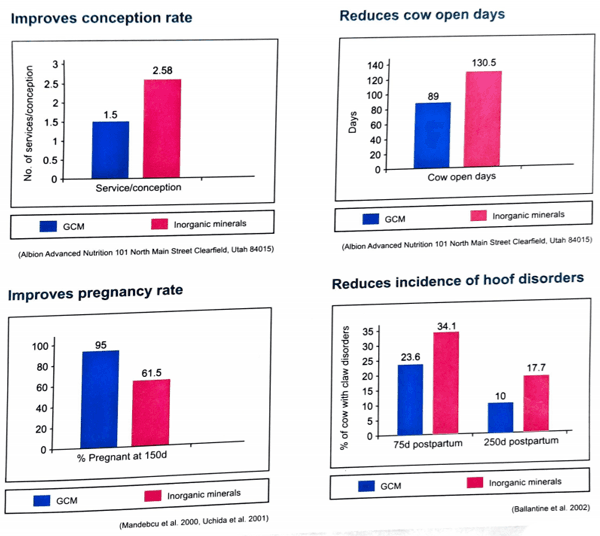
Related topics:
Authors:

Influencers who recommended :
Mariana PetkovaRecommend
Comment
Share

19 de febrero de 2022
Very good presentation of role of micro elements, it wiil be better for adding role in other trace element especially selenium in performance of livestock
Recommend
Reply
Recommend
Reply
Recommend
Reply
Recommend
Reply
Recommend
Reply

Would you like to discuss another topic? Create a new post to engage with experts in the community.




